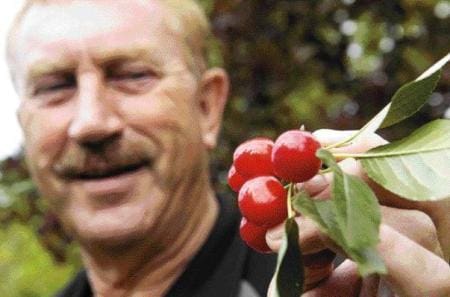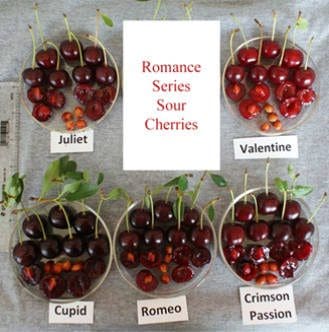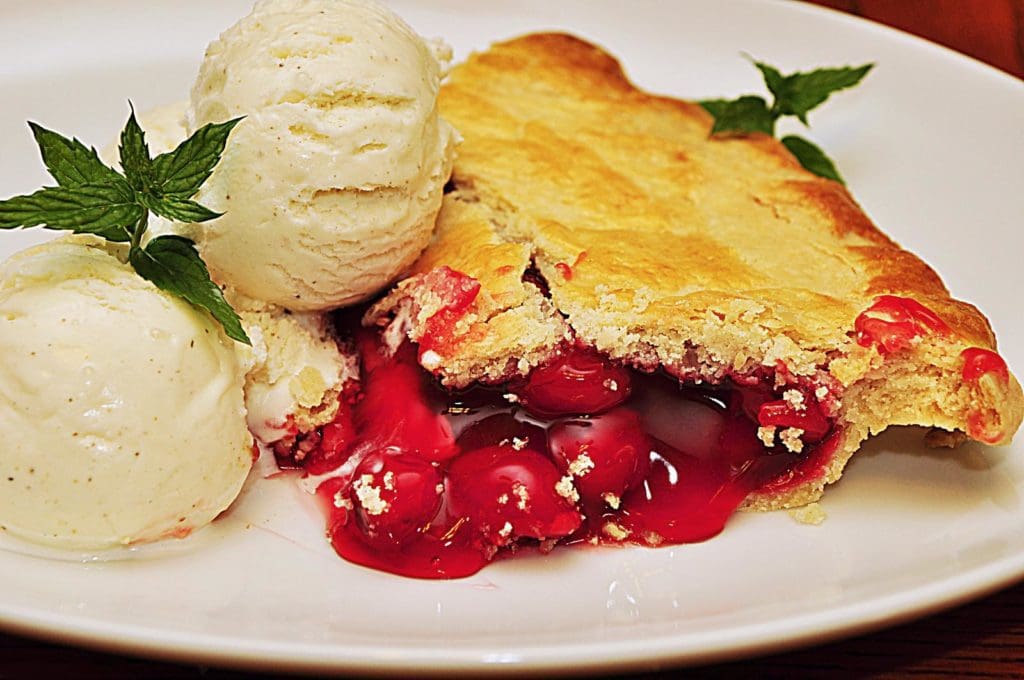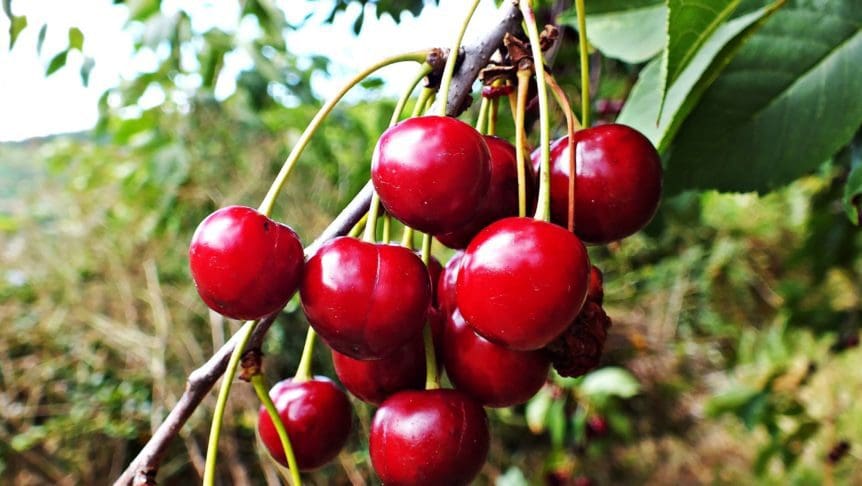It’s not too late to plant cherries in the prairies! Cherry plants that have been grown in containers can be planted from spring and right through until fall. We have planted sour cherries well into early October with great success. We mulch the root balls with about 12” of wood shavings or wood chips the last week of October to protect them from temperature swings. We rake the mulch off in the spring to allow for an inch of compost over the root system.
Growing cherries on the prairies is a worthy new fruit we can enjoy in our Edmonton area gardens, thanks to the breeding program for hardy ‘tart’ cherries at the University of Saskatchewan.
So what’s the secret to successfully growing cherries on our prairies?
It starts with choosing the right varieties.
The University of Saskatchewan’s breeding program has produced two series of excellent cherries for zone 3 gardens. Dr. Evans, of the University of Alberta, discovered the original hardy sour cherry in the Horsehill area just 15 minutes from our farm northeast of Edmonton, which was named the Evans Sour Cherry. That cherry has been crossed back to some winter-tough Mongolian cherries. Today’s “tart” cherries have a lot of winter hardiness and can endure cold temperatures that are lethal to sweet BC cherries. They are dwarf little trees, which don’t require much space – maxing out at about 2 m / 8’ tall, with some of the newest introductions topping out a only 1.5 M / 5’ tall as a bush cherry, yet still produce lots of wonderful sweet and tangy cherries.


A common myth about sour cherries is that they are sour because they lack sugar. But on a gram-per-gram basis, these new ‘tart’ cherries have more sugar (or higher brix) than their sweet cherry relatives. The sourness is due to higher acidity, which can dominate the sugary flavours.
Most folks are accustomed to purchasing expensive Okanagan ‘Bing’ cherries as a treat. But we have opted to grow our own, and have planted over 100 of the Tart cherries at our farm. We’ve developed quite a fondness for the flavour of the tart cherries – not just in pies or for pancake syrups, but to eat right off the trees. We’ve learned it’s best to leave the sour cherries on the bushes until they really deepen in colour to almost black. The sugars have had a chance to build up to the point that they overcome the acidity and significantly reduce fruit tartness.
Fall planting Tart Cherry basics
Evaluate your planting site carefully. Here are three things cherries need:
- Plenty of sunlight (at least 6 hours a day)
- Adequate space (a 6’ wide spot)
- A well-drained spot (where water does not sit)
Keep in mind that there are two basic growth habits of tart cherries: tree form and shrub form.


The old-fashioned parent tree – the ‘Evans’ cherry is the standard ‘tree form’ sour cherry that grows about 12’ / 4 metres tall and is a reliable annual producer of excellent but sour cherries for pies.
The Romance series grows to 6’ wide x 8’ tall. ‘Juliet’ is a bush-type or tree-type and has terrific flavour and always finishes near the top of gardeners ‘taste-test’ list. Both tree and bush types require some pruning for best production and growth control, but it’s not an onerous task to keep the sour cherries in great shape and under control with just a few annual pruning cuts. Crimson Passion’ is the sweetest.
‘Cupid’ is the largest cherry. In my staff’s opinion, the flavour and texture of the Romeo Cherry is the most like the Bing Cherry. ‘Carmine Jewel’ is the smallest cherry, but the hardiest tree and most prolific producer. The new Three Musketeers series: Sweet Thing, D’artagnan, and Cutie Pie are all sweet, large and super easy to pick on bushes around 5 feet tall. They will grow into a hedge over time, so not ideal for a specimen shrub situation. Sweet Thing has the highest quality cherry of all, but may not be as hardy -and is still under review for hardiness in zone 2 – 3 gardens. Interestingly – it is a cross of Carmine Jewel and a Hungarian tart cherry called ‘Erdi Jubileum’.
When it comes to pollination, the good news is that tart cherries are all self-fertile, which means that you’ll get fruit set with just one tree. However, just because sour cherries don’t need cross-pollination, that doesn’t mean that they don’t benefit from bees transferring pollen within and between sour cherry flowers. Bees can increase fruit yield dramatically.
For the homeowner – the tart cherries – both tree and bush forms have great value as ornamental plants. Not only are they covered in spectacular beautiful white blossoms in early spring, the cherries are remarkable – and offer a haven for diversity for local birds (yes – you’ll need ‘scare eyes’) to keep some for yourself. The birds always seem to know when they are ready – three days before you do! Fruit drop is hardly ever a concern.


Tart cherries can be made into ice cream, juice, jelly, jam, compote, liqueur, wine and fruit leather. Use the pitted cherries in baking muffins, crisps and pies. Cherries on the prairies are now available to everyone in Canadian Hardiness zone 2-4 gardens to plant and enjoy!

